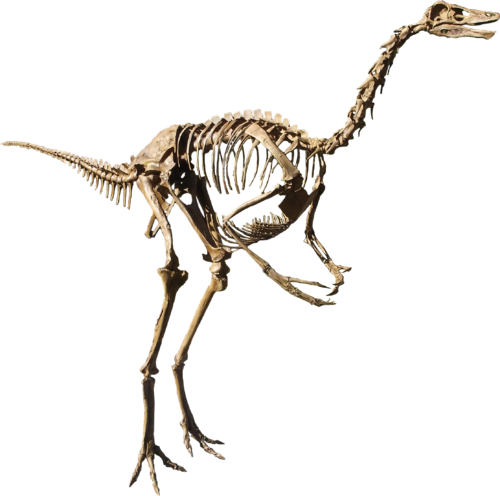Struthiomimus Facts for Kids
Struthiomimus was a swift, ostrich-like dinosaur from the Late Cretaceous, known for its long legs and potential bird-like characteristics.
View Article For:

Related Articles
Introduction
This dinosaur was discovered in Canada, specifically in the province of Alberta. Its name means "ostrich mimic" because it walked on two legs like an ostrich! Struthiomimus could reach a length of about 13 feet (4 meters) and was known for its speedy running—up to 40 miles per hour (64 km/h)! 🏃
♂️ This dinosaur had a long neck, small head, and big eyes, making it look like a giant bird!
Habitat And Range
It lived in semi-arid environments with plenty of vegetation, which were filled with trees, shrubs, and other plants. These habitats provided lots of food and places to hide from predators. Its fossils have been found in the Dinosaur Park Formation, a rich site in Alberta where many other dinosaur fossils have been unearthed! 🏞
️
Conservation And Legacy
The discovery of these fossils helps scientists learn about the prehistoric world and how dinosaurs lived. By studying dinosaurs, we can better understand the earth’s climate changes and evolution, which can help us protect the environment for future generations! 🌱
Physical Characteristics
With arms that ended in three fingers, it could pick up small food with ease. Its beak was toothless, much like modern birds, helping it to nibble on plants and other tasty snacks. It had long, slender legs and a long tail, which helped with balance while running. Overall, this dinosaur looked quite a lot like an oversized chicken or ostrich! 🥚
Diet And Feeding Behavior
Paleobiology And Behavior
This behavior helped in protecting young ones from predators like the fearsome Tyrannosaurus rex. They were fast runners, which helped them escape danger. These dinosaurs may have communicated with each other using sounds, much like how ostriches do today.
Discovery And Fossil Evidence
️♂️ The first fossils were found in Alberta, Canada, in 1900. Since then, other fossils have been found throughout North America. Paleontologists pieced together its appearance and behavior by studying these fossils. The bones showed us it was built for speed and had characteristics similar to today’s birds!
Comparison With Other Dinosaurs
However, unlike the Velociraptor, which was a fierce hunter, Struthiomimus was more of a runner and forager. It also shares similarities with the Gallimimus, another fast dinosaur. Both had long legs and bird-like features, proving that some dinosaurs were more like modern birds than reptiles!
Cultural Impact And Representations
DIY is a humongous library of
activities and courses for kids.
Curious?
Gallery of

Did you know?
🦖 Struthiomimus lived during the Late Cretaceous period, around 77 to 65 million years ago.
🏃 Struthiomimus was an incredibly fast runner, capable of reaching speeds up to 40 miles per hour.
🐦 It is believed that Struthiomimus fed primarily on plants and small animals, similar to modern-day ostriches.
🦴 Struthiomimus was a theropod dinosaur, related to the iconic Tyrannosaurus rex.
📏 Struthiomimus could grow up to 13 feet long, making it one of the larger ostrich-like dinosaurs.
🌍 Fossils of Struthiomimus have been discovered in North America, particularly in Canada and the United States.
✋ Its forelimbs were long and ended in five fingers, making it versatile for foraging.
👀 Struthiomimus had large eyes that may have given it excellent vision, helping it evade predators.
🦩 The name ‘Struthiomimus’ means ‘ostrich mimic,’ reflecting its resemblance to modern ostriches.
🌱 Struthiomimus may have used its long neck to reach for high vegetation and fruits.

